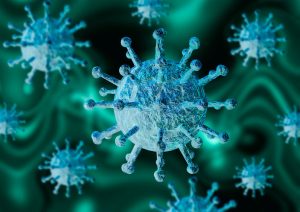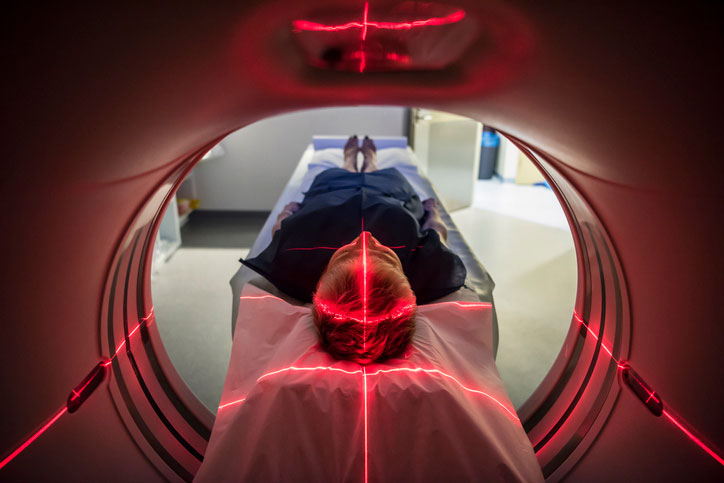Does Contracting COVID-19 Result in Permanent Neurological Damage? A Serious Question
There’s no question in anyone’s mind that psychological fallout from the COVID-19 pandemic is going to be unprecedented.
Professionals in every category and specialty of mental and behavioral health are gearing up for a massive increase in demand after the first wave of the disease passes. That includes applied behavior analysts, who routinely handle the kind of thorny psychological disabilities that emerge from such trauma – both directly for the healthcare workers scarred by their frontline exposure, and for the rest of us experiencing a sense of isolation and helplessness.
But while everyone is focusing strictly on the purely psychological impacts expected to come in the wake of the COVID-19 outbreak, there are signs emerging that there may be long-term neurological traumas inflicted by the disease as well. And while behavior analysts are just one option for the treatment of completely psychological problems, they may be the best option for handling complex neuropsychological issues… if we can find enough of them.
The Mental Health Aftereffects of COVID-19 Are a Given; The Mechanism of Trauma is Not

If most of the long-term global effects of COVID-19 are still shrouded in mystery, there are some things all the experts agree on: a major economic recession, significant healthcare disruption, and lingering mental health issues.
Those mental health problems can be extrapolated in part from looking at past large-scale traumatic events:
- September 11 Terror Attacks
- The Great Recession
- The Great Depression
Pile on social isolation and the loss of structural supports that people would otherwise rely on to cope with those traumas, and you have a recipe for some real long-term mental health issues. Literature reviews conducted by the Institute of Medicine show after-effects from evens like this including:
- PTSD
- Depression
- Somatic complaints and sleep disorders
- Chronic social and familial conflicts
- Increase substance abuse
And, for good measure, you can throw in the economic anxiety and direct healthcare effects associated with the global depression that is probably already underway.
That already reads like a laundry list of some of the most common categories of psychiatric treatment that applied behavior analysts handle.
But there’s an aspect to COVID-19 that doesn’t map well to those prior events: the potential neuropsychiatric effects of the virus itself.
Coronaviruses Can Strike Directly at the Central Nervous System

Behavior analysts are no strangers to treating conditions affecting the central nervous system (CNS) that often accompany trauma to the body’s primary communication network. Everything from head trauma to strokes to autoimmune disease can cause CNS damage. And those conditions can lead to everything from palsy to Alzheimer’s to epilepsy… all treatable through behavioral interventions.
It’s not as widely recognized—yet—that coronaviruses could be one of those traumas. But there is both historical and medical evidence that this is the case, and the evidence is mounting that COVID-19 is among them.
Viruses Have Left a Lot of CNS-related Issues in the Past
We have hints of this stretching back as far as the big global pandemic that everyone is using as the yardstick for COVID-19. The aftermath of the Spanish Flu epidemic of 1918/19 saw an increase of a variety of CNS disorders, including:
- Parkinson’s disease
- Catatonia
- Psychosis
- Hypersomnolence
Although modern scientists might at first be inclined to disregard some of the less rigorous research practices of that age, those findings were intriguingly replicated during the 2009 H1N1 outbreak (a strain believed to be a descendant of the Spanish flu).
While those were flu viruses, there’s even better evidence that coronaviruses can inflict similar damage. Most recently, the SARS-CoV-1 and MERS-CoV outbreaks resulted in documented cases of narcolepsy, encephalitis, and a variety of other neuromuscular and demyelinating processes.
Those issues can emerge weeks after recovery, or decades. And these effects, unlike the strictly psychiatric, do not normally dissipate over time for most patients.
Does COVID-19 Hold Dark Neurological Secrets?
The big question for healthcare professionals is whether or not COVID-19 will inflict similar damage.
One of the most significant telltales of COVID-19 already points in that direction: the strange loss of taste and smell that many COVID-19 patients are reporting may indicate infiltration of the disease in some of the high-order structures of the central nervous system that control those senses.
There is already tentative evidence in some COVID-19 survivors of some types of neurological deficits… evidence that further supports the theory that coronaviruses creep into the central nervous system.
There is also some reason to believe these effects may be particularly strong with the current strain of coronavirus, since it appears to attack the elderly more severely than younger patients. That population is not only more susceptible to post-infectious neurocognitive complications, but also more likely to be suffering from one or more of those issues already.
Comorbidities like that typically make treatment more complex for medical teams. Since ABAs focus on functionality, however, they can base interventions on behaviors rather than on the multiple conditions causing them.
ABA May Offer the Best Therapy for Dealing with the Results of Neurological Damage

Like pretty much every aspect of COVID-19, it’s far too early to make any definitive statements about the long-term effects. But it’s not too early to start preparing to treat patients in a post-pandemic society, and it’s important to explore what the best and most necessary treatment options may be.
ABA has long been one of the best evidence-based treatments available for neuropsychiatric issues, with autism taking center stage as ABA’s biggest success story. But it’s equally used, and useful, in the same types of disorders that COVID-19 may spawn.
With the portion of the population likely to be infected by COVID-19 before the pandemic is brought under control, that’s a lot of potential patients. Making matters worse, a 2019 analysis of data from the Behavior Analyst Certification Board showed that the supply of behavioral analysts in the United States was already low compared to demand. And with a master’s degree required to earn a BCBA credential, and many colleges operating way under their normal capacity right now, there’s no fast path to building those numbers up any time soon.







